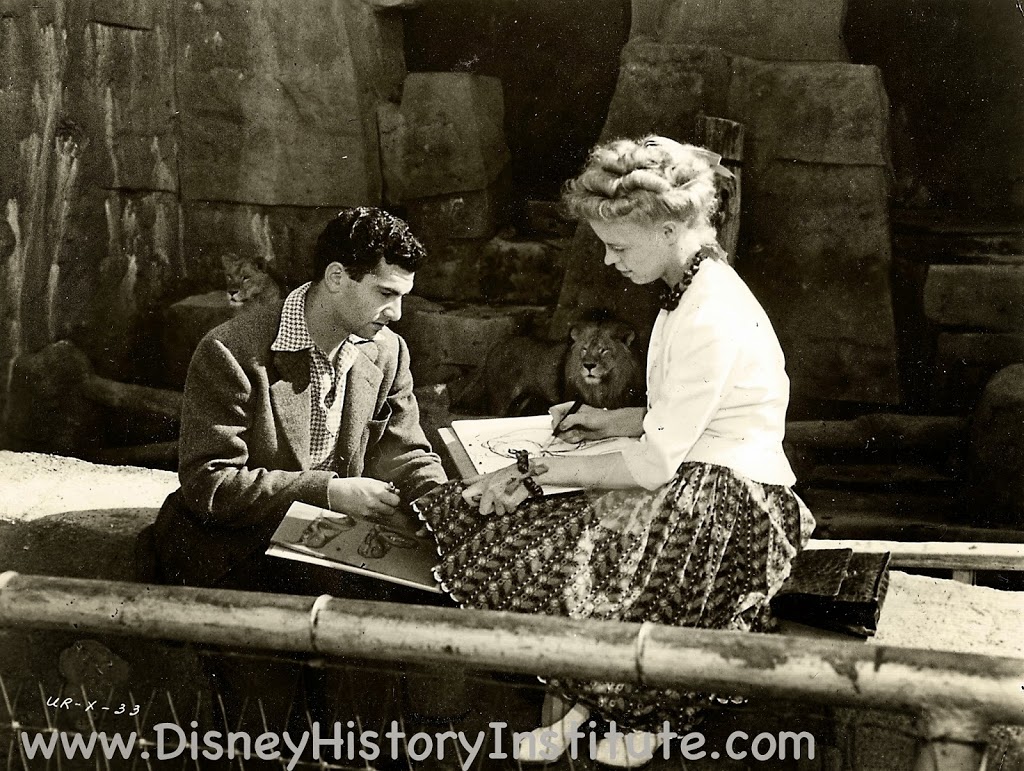 |
| Retta Scott and Mel Shaw – Griffith Park Zoo – c1940 |
Walt Disney and the Griffith Park Zoo
by Todd James Pierce
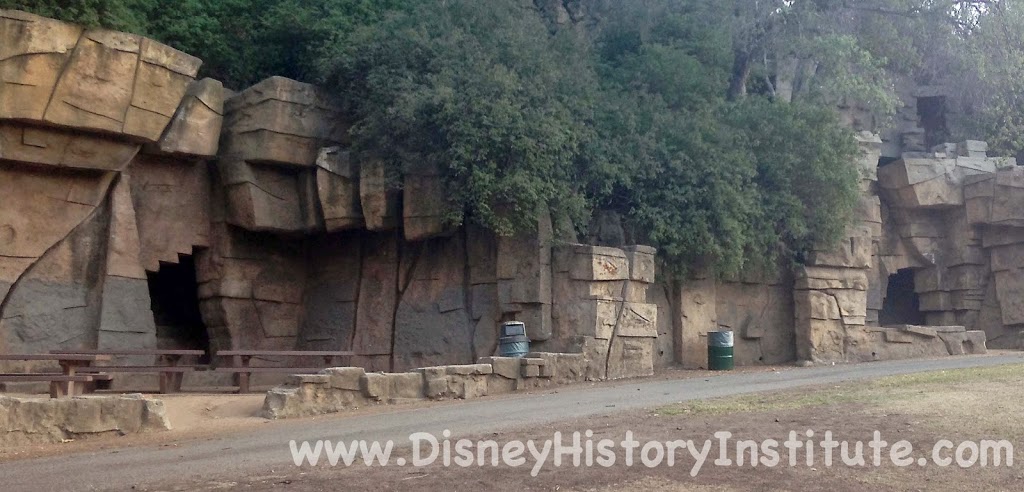 |
| Lower Row WPA-Style Stone Enclosures |
Many people know that Griffith Park holds Walt Disney’s Carolwood Barn, the backyard structure where he worked on his scale-model railroad. They also know that the park holds the famous carousel where Walt once took his daughters and where—at least as Walt later explained it—he sat on a bench and first conceptualized Disneyland. But the park holds other treasures related to the personal history of Walt Disney and the artistic history of his studio. The greatest of these are the remains of the original Griffith Park Zoo.
Concealed behind a lower set of foothills—a ten-minute hike from the road—are the elegant (and extremely small) enclosures that once defined the park’s zoo. Along with the carousel, the zoo was the other park location where Walt regularly took his daughters: according to Diane Disney Miller, their Sunday routine was church then “Griffith Park, usually, to the zoo or to amusement parks or something.” But aside from Walt’s personal fondness for the location, the Griffith Park Zoo was also central to the development of the studio.
To increase the realism in his cartoon shorts and later the features, Walt hired art teacher Don Graham to better train his animators in classical illustration and motion. As part of these classes, as animator Volus Jones recalls, Graham regularly led “field trips over to Griffith Park Zoo” to sketch animals and better understand their anatomy and movement. According to animator Jack Bradbury, for a while, these trips were as regular as clockwork: “one full morning a week was spent at the zoo, sketching live animals.”
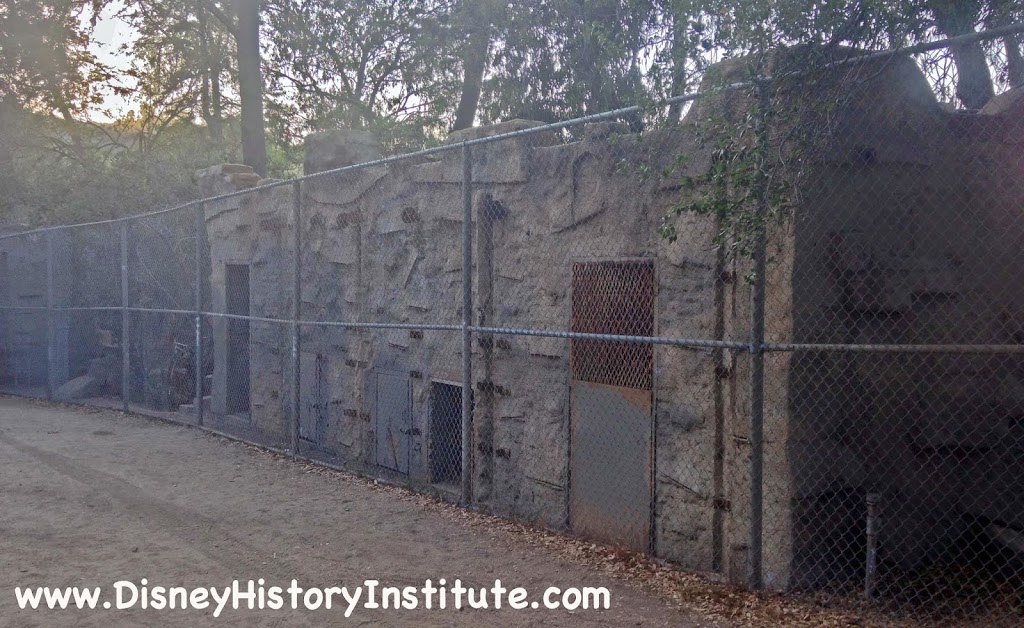 |
| Upper Row |
As the studio moved into production on Bambi, groups of animators—outside of Graham’s structured field trips—sought out the zoo as a source of inspiration to design and animate animals. “As the people that were working [on Bambi] were learning more about animal drawing,” explains animator Mel Shaw, “Marc Davis, myself, and Retta Scott, we used to go to the zoo, which was just down the road from [the Disney studio in Burbank], for lunch practically every day, and we would sketch the animals around there. I think that we were trying very hard to get something that was a stylized version of the real animal.”
“The Griffith Park Zoo was very minimal at the time, but still—it was animals,” Marc Davis recalls. The zoo, as best I can tell from records and remains, contained only two rows—more of a city park with animals than a formal zoo. The south sections of the lower row, with its elegant WPA-style stone enclosures, housed large animals such as lions and bears. The north section housed monkeys, macaws and other medium-sized animals in wire and metal cages. The upper row—which also may have been used to isolate or treat sick animals—contains a series of rockwork cages and also a work building.
The zoo was so small, with only a couple dozen enclosures, that a person could walk its length in under five minutes. This also explains why Walt repeatedly brought animals into the studio. Not only could animators better study them (such as two New England fawns purchased for Bambi) under studio lights, animators couldn’t find many animal models at the local zoo. To mediate these problems, animators regularly drove to the better-equipped San Diego Zoo and a few animators (such as Marc Davis and Mel Shaw) ventured up to Thousand Oaks where the Hagenbeck-Wallace Circus housed their animals during winter.
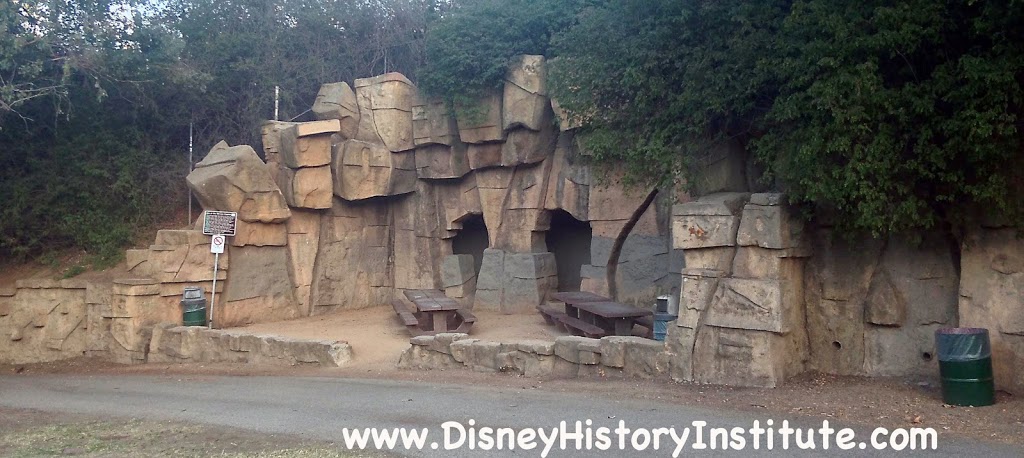 |
| Lion Enclosure |
The Griffith Park Zoo existed from 1912 to 1965, with the large animals (such as the lions) arriving in the mid-1930s. The studio had a strong relationship with the zoo. When the studio finished Bambi, they donated the two New England fawns to the zoo, where they were displayed for the public. When the park wanted to develop a larger zoo, they asked Walt Disney and the studio to participate in its design. According to studio artist Blaine Gibson, “They felt that Disney, with the artists that he had, could improve [the park].” For a while, during the 1950s, Walt Disney was involved with the development of the new zoo (now called the Los Angeles Zoo) to be built two miles from Griffith Park Zoo. Disney considered how landscape designs and artistic elements—such as statues—might help enhance the physical space of a zoo. But eventually zoo board politics ended Walt’s relationship with the development team.
Even though the animals were removed decades ago, the remains of the zoo still inhabit Griffith Park: the stairs, the walkways, the stone enclosures, and rows of metal cages. They cannot be seen from the road or the parking lots. They are well-hidden but open to the public. I’m including a map below. If you take Crystal Springs Drive and park near the carousel, you can find them by following northwest trails. To see the upper portions, you’ll need to hike dirt trails. But tucked back in this hidden portion of the park is the zoo that Walt once knew and was a regular research location for scores of studio artists.
####
Lastly, a quick note: You can contact me through my personal webpage. My most recent book, THREE YEARS IN WONDERLAND is a detailed narrative history of the development of Disneyland (from 1953-1956), a moment by moment account of its creation and opening: the struggles, the challenges, the in-fighting and the success. You can find it on Amazon. And remember, even when things are a bit slow on the blog, the DHI Facebook Group is always jumping with new posts relating to the history of Walt Disney and the Walt Disney Company. –TJP

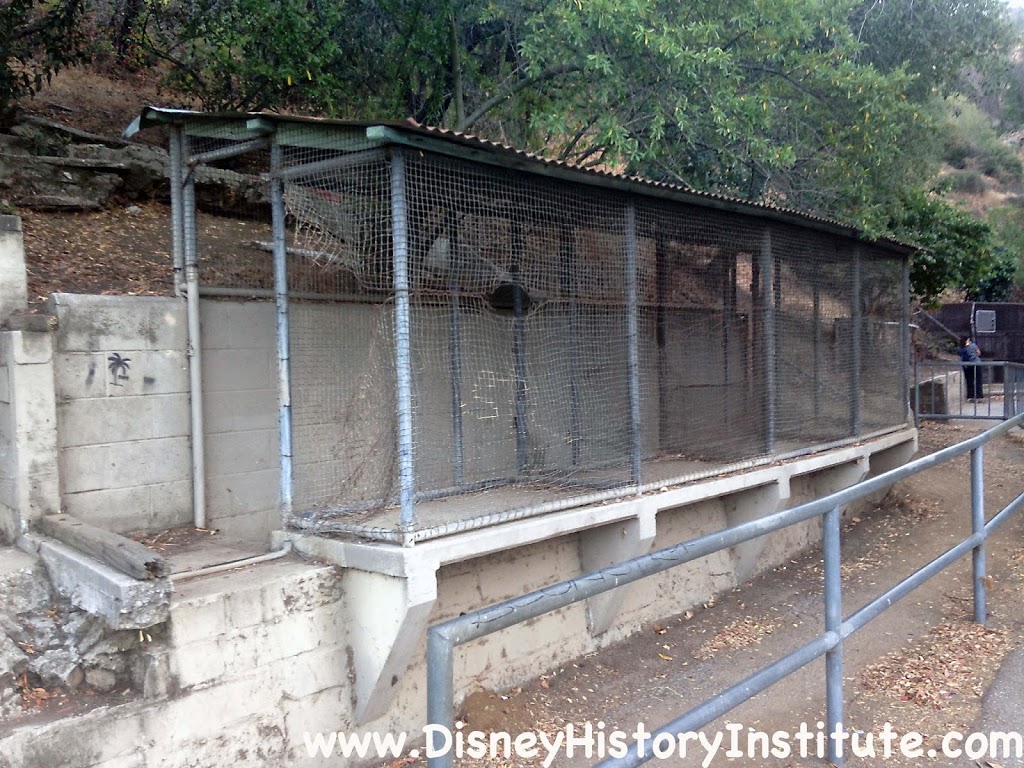
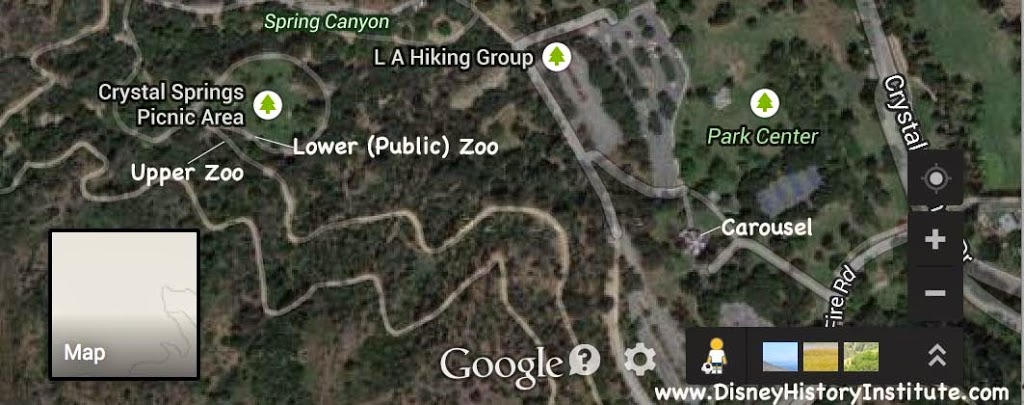
It’s also interesting to note that long before he was hired by Walt Disney, Marc Davis would spend several hours drawing the animals at Fleishhacker Zoo in San Francisco.
Great article. Definitely will check it out.